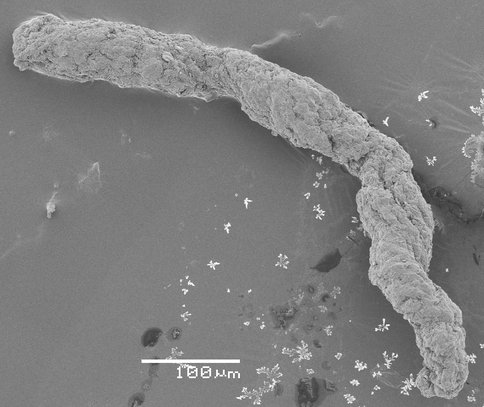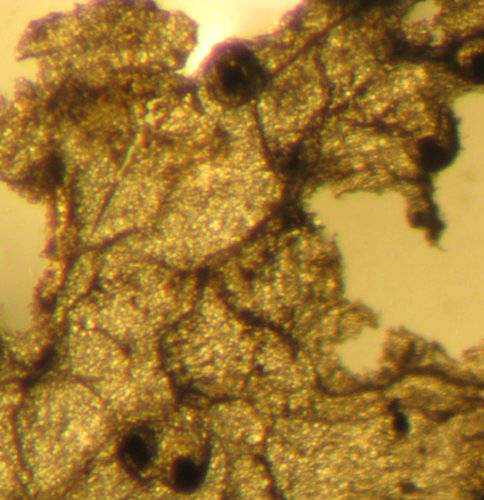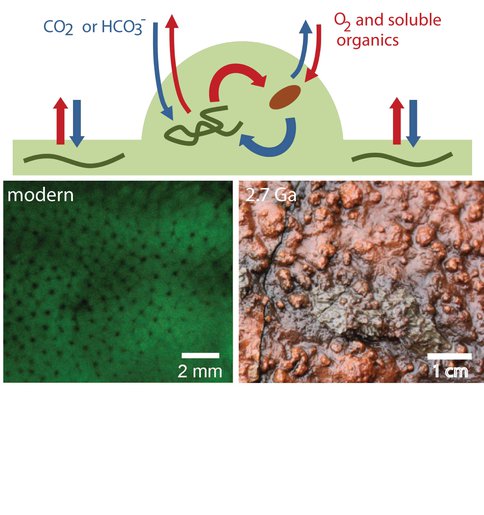2012 Annual Science Report
 Massachusetts Institute of Technology
Reporting | SEP 2011 – AUG 2012
Massachusetts Institute of Technology
Reporting | SEP 2011 – AUG 2012
Unicellular Protists of the Neoproterozoic
Project Summary
We investigated 1) how microbial processes shape some sedimentary rocks, 2) how microbial processes influence the isotopic composition of sulfur-rich minerals that are used to understand the evolution of oxygen and the cycling of carbon in the past, 3) searched for fossils of organisms that lived between 716 and 635 million years ago, surviving times when ice covered entire oceans, even at the equator and 4) used these fossils, recovered from limestone rocks, to understand the cycling of carbon during this unusual time.
Project Progress
Studies of microbially-shaped rocks supported the use of mm-scale clumps as an early morphological biosignature of oxygenic photosynthesis, offering independent evidence that some stromatolites were shaped in the presence of oxygen 0.2-0.4 Ga before the rise of atmospheric oxygen. Experiments tracking the cycling of carbon in photosynthetic biofilms related the shapes of pinnacles and conical stromatolites to the flow of nutrients. These insights were used to develop quantitative tests for the presence of former biofilms in the laminae of conical stromatolites and were summarized in a review of recent process-oriented models of stromatolite morphogenesis. Isotopic imprints of microbial processes in sediments were explored by studies of environmental factors and enzymatic processes that control the magnitude of microbial sulfur fractionation during microbial sulfate reduction. Culturing studies of sulfate reducers underscored the complexity of factors that control the magnitude of microbial sulfur isotope fractionation by demonstrating higher fractionations in cultures limited by iron and nitrogen, as well as in mutants of sulfate reducing bacteria with impaired enzymes in the electron transport chain. These studies have implications for the environmental distribution of sulfate reducing bacteria and for the interpretations of large S-isotope fractionations during ocean anoxic events. The search for fossils of early modern eukaryotes in carbonate strata deposited between the two Neoproterozoic global glaciations uncovered the fossils of the earliest putative foraminiferans, revealed different agglutinated eukaryotes at different localities of the Rasthof Formation, Namibia and described the earliest macroscopic, multicellular organic-walled fossils that are similar to some modern red algae. We have started using organic remnants of Neoproterozoic eukaryotes to explore the cycling of carbon during the deposition of isotopically extreme carbonates between the Sturtian and the Marinoan glaciation.
Finely agglutinated tubular fossil of a putative foraminiferan from the 716-635 million year old Rasthof Formation, Namibia.
Photograph of a large organic sheet extracted from the 716-635 Ma limestones from the Tsagaan Oloom Formation of Mongolia. The sheets preserve evidence of polygonal cell walls, ridges (seen in the photo) and reproductive structures (small warty objects with dark centers in the photo). These features are similar to the structure of modern red algae. The small warty protuberances in the photo are ~ 100 micrometers wide.
Some modern cyanobacteria form clumped mats that grow into larger cones. The initiation and the persistence of clumping depends on the presence of oxygen in the medium around cyanobacteria and clumping is thought to benefit these organisms by promoting recycling of carbon and growth within the clump. Mm-scale clumps that grow into larger conical stromatolites are also present in the 2.7 billion year old Tumbiana Formation, recording possibly the oldest evidence for oxygenated environments under an anoxic atmosphere.
Publications
-
Bosak, T., Lahr, D. J. G., Pruss, S. B., MacDonald, F. A., Gooday, A. J., Dalton, L., & Matys, E. D. (2011). Possible early foraminiferans in post-Sturtian (716-635 Ma) cap carbonates. Geology, 40(1), 67–70. doi:10.1130/g32535.1
-
Petroff, A. P., Wu, T-D., Liang, B., Mui, J., Guerquin-Kern, J-L., Vali, H., … Bosak, T. (2011). Reaction–diffusion model of nutrient uptake in a biofilm: Theory and experiment. Journal of Theoretical Biology, 289, 90–95. doi:10.1016/j.jtbi.2011.08.004
-
PROJECT INVESTIGATORS:
-
PROJECT MEMBERS:
Tanja Bosak
Project Investigator
Daniel Lahr
Co-Investigator
Phoebe Cohen
Postdoc
Emily Matys
Research Staff
-
RELATED OBJECTIVES:
Objective 4.1
Earth's early biosphere.
Objective 4.2
Production of complex life.
Objective 5.1
Environment-dependent, molecular evolution in microorganisms
Objective 6.1
Effects of environmental changes on microbial ecosystems
Objective 7.1
Biosignatures to be sought in Solar System materials


